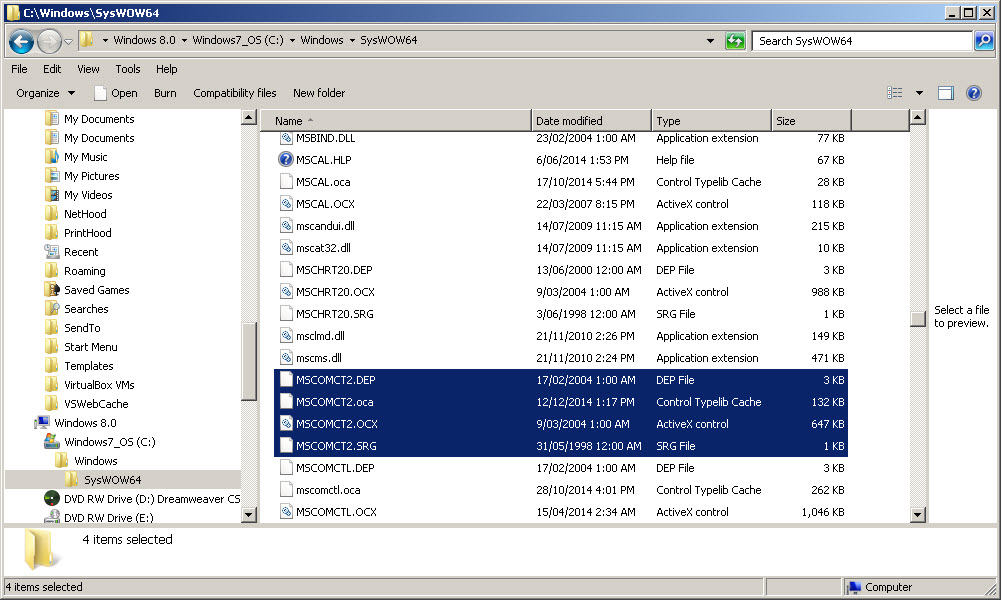

- #MICROSOFT MONTHVIEW CONTROL 6.0 2016 UPDATE#
- #MICROSOFT MONTHVIEW CONTROL 6.0 2016 VALIDATION CODE#
- #MICROSOFT MONTHVIEW CONTROL 6.0 2016 CODE#
- #MICROSOFT MONTHVIEW CONTROL 6.0 2016 PROFESSIONAL#
- #MICROSOFT MONTHVIEW CONTROL 6.0 2016 WINDOWS#
This can be a good solution if you have requirements that cannot be met by other commercial components, or if ownership of code is desired to enable future enhancements. Some developers will prefer to write a custom date control to meet specific needs.
#MICROSOFT MONTHVIEW CONTROL 6.0 2016 UPDATE#
I would strongly suggest rejection of controls that fail-do not rely on updates to fix problems because you might compromise the integrity of your data before an update is available. Once you have some guidelines to follow you should test any prospective date control against those standards. The guidelines in this chapter are compliant with most industry standards including the British Standards Institute (BSI). It might not be! Your organization might have a set of Year 2000 guidelines. Do not assume that because the control is sold commercially it will be Year 2000 compliant. If you opt for a third-party control, it is important to evaluate the control thoroughly. More coding effort will be required to ensure consistency than if a custom control were to be used.
#MICROSOFT MONTHVIEW CONTROL 6.0 2016 VALIDATION CODE#
However, these will undoubtedly mean having to write validation code that must be used in every part of the application that reads or displays a date. There are a number of alternative options available when it comes to date validation. With the added burden of Year 2000 data-entry validation, development teams might well resort to third-party controls for date display and entry. We're not going to recommend any particular control, purely because we feel that you have to perform these tests yourself. With all these controls, and any third-party ones you are interested in, you must perform a thorough acceptance test before clearing them for use. This is the MSCal control, which gives you a view similar to the MonthView control. The other alternative is shipped with Microsoft Office 97 Professional. There is nothing to stop you from including the CSafeDate class and the subclassed date functions within this control to take advantage of the improved windowing we looked at earlier in this chapter. You could use this control as the basis of your own "corporatedate" entry control with the advantage of having access to the source code so that you can be sure it is compliant.
#MICROSOFT MONTHVIEW CONTROL 6.0 2016 PROFESSIONAL#
The first is a source-code control shipped with the Microsoft Visual Studio 98 Enterprise Edition (Disc 3), the Visual Studio 98 Professional Edition (Disc 2), and the Visual Basic 6 Enterprise and Professional Editions (Disc1), all at the location \Common\Tools\VB\Unsupprt\Calendar. Two nice features are the ability to display more than one month at a time, and the ability to select a range of dates.įigure 8-7 Two implementations of the Microsoft MonthView control More alternativesBefore you resort to purchasing a third-party control, there are a couple more options for you to consider. The user can select a date using the mouse or the cursor keys there is no facility for typing dates in directly. This control gives you a view similar to the Picker of the DatePicker control. The MonthView control, shown in Figure 8-7, is a much simpler proposition. This can lead to some very obscure results, such as if you set the custom format to mm/dd/yyyy.įigure 8-6 Three implementations of the Microsoft DateTimePicker control If you use a lower-case m, the control will display minute information where you expected the month to be. When using a custom format with the DatePicker control, be careful to specify the month part with an upper-case M. The chosen date or time is made available to you through the control's Value property as a Date data type. You can also replace the combo box with the spinner for the date display by setting the DateTimePicker control's UpDown property to True. The control can also be used for the display and input of time information by setting its Format property to dtpTime, in which case the dropdown combo box is replaced by a Spin control. The DateTimePicker control, shown in Figure 8-6, works similarly to a drop-down combo box: users can enter information directly into the text field at the top, or if they prefer they can use the drop down to reveal a Picker from which they can select their date. Either control can be used for date entry and display.
#MICROSOFT MONTHVIEW CONTROL 6.0 2016 WINDOWS#
Both of these can be found in the Microsoft Windows Common Controls_2 6.0 component. New additions to the latest version of Visual Basic are the DateTimePicker (DTPicker) and MonthView controls.


 0 kommentar(er)
0 kommentar(er)
